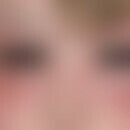Synonym(s)
DefinitionThis section has been translated automatically.
The real vanilla (from the French vanilla 'small pod' or pod), also called spice vanilla (Vanilla planifolia), is an evergreen climbing and climbing liana from the orchid family. Genuine vanilla is native to the forests of eastern Mexico and is now cultivated in many tropical countries (especially on the islands of Madagascar and Reunion, formerly Bourbon/Bourbon Vanilla).
True vanilla is an epiphytic climber with fleshy, bare stems that can reach several metres in length. The fleshy leaves are lanceolate in shape and emerge at the nodes of the stems. The flowers are greenish yellow. From them the fruits develop, 15-20cm long, many-seeded seed capsules. The spice vanilla is produced from the seed capsules.
IngredientsThis section has been translated automatically.
1.5-3% vanillin (Bourbon vanilla 3.2-3.7%) Vanillin acid, vanillyl alcohol, protocatechuic acid/aldehyde; also malic, tartaric, citric and benzoic acid.
You might also be interested in
OccurrenceThis section has been translated automatically.
Vanilla planifolia is the parent plant of Fructus vanillae, the vanilla fruit or vanilla bean. The drug, Fructus vanillae is the vanilla beans are created during the fermentation process. In the fresh fruit, vanillin is only present in the form of an odourless vanillin-beta-glucoside (vanilloside).
EffectsThis section has been translated automatically.
Field of application/useThis section has been translated automatically.
As a flavoring or spice versatile used in toiletries, food and beverages such as tobacco and liqueurs, but also in pharmaceuticals.
Homeopathically, Vanilla planifolia, the ripe, dried and fermented fruits are used. There is a negative monograph of the Commission D.
Undesirable effectsThis section has been translated automatically.
ClinicThis section has been translated automatically.
LiteratureThis section has been translated automatically.
Bezerra DP et al (2016) Overview of the Role of Vanillin on Redox Status and Cancer Development. Oxide Med Cell Longev 9734816.
Gallage NJ et al (2015) Vanillin bioconversion and bioengineering of the most popular plant flavor and its de novo biosynthesis in the vanilla orchid. Mol Plant 8:40-57.
Hausen BM, Vieluf K (1997) Allergy plants, plant allergens. Ecomed publishing house, Landsberg/Munich, S. 247-250
- Odoux E et al (2003) Purification and characterization of vanilla bean (Vanilla planifolia Andrews) beta-D-glucosidase. J Agricultural Food Chem 51: 3168-3173





